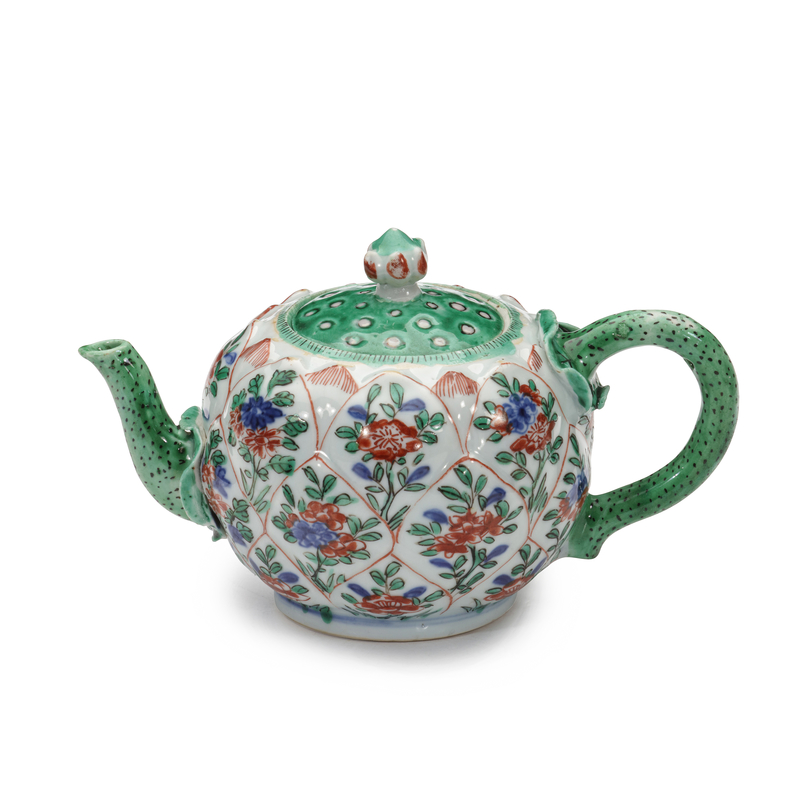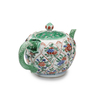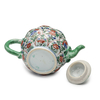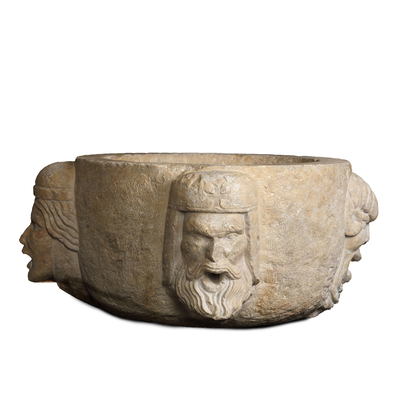Famille verte lotus-shaped teapot
Global shipping available
- Origin
- China
- Period
- Kangxi Period, 1662 - 1722
- Material
- Porcelain
- Height
- 9.8 cm
- Depth
- 16 cm
Questions about this object?
Please use one of the contact options below:
Description
This colorful famille verte teapot is molded as a flowerhead with overlapping petals. The spout and handle are in the form of a branch with a lotus leaf. The cover is shaped like a lotus pod with seeds. It is decorated with underglaze blue, green glaze and red enamels. The lotus is a special and sacred flower in the Buddhist tradition; the floating lotus symbolises purity of the body, mind and speech, and it represents the detachment of physical desire and material attachment. According to Buddhist legend, Buddha’s first steps made beautiful lotus flowers appear everywhere he walked.
Famille verte is a Western term (initially introduced by Albert Jacquemart in 1862) used to classify Chinese porcelain of the Qing dynasty by the dominant green colour of its enamel palette. Besides famille verte, famille rose, jaune and noire are used to describe the different colours.
Tea has played an important part in Chinese culture and rituals for more than 2000 years. Recent discoveries proved that tea was used as an imperial beverage in the early Han dynasty, 2nd century BC. In the centuries that followed, tea became more and more available for the whole population, and during the Tang dynasty (618 - 907), under influence of Buddhism, drinking tea became an important part of everyday life. At first, tea was mostly prepared from compressed bricks of powdered tea. Over time, this evolved into the use of loose tea leaves which made teapots for steeping necessary. The Chinese tea, and porcelain teawares, turned out to be popular export products and in high demand in both Japan and Europe during the Qing dynasty.








